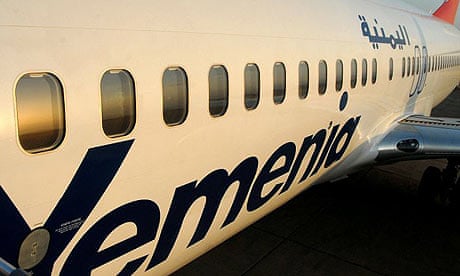The setting up of a new global blacklist of planes unfit to fly will be discussed this week at a summit meeting between Antonio Tajani, the European transport commissioner, and Robert Kobeh González, president of the International Civil Aviation Organisation.
The meeting follows the crash of a Yemenia airlines airbus off the Comoros islands last week, when 152 passengers and crew died - the sole survivor was a girl of 12 who lives in Paris. Advocates of a global blacklist believe it would prevent carriers in the developing world from using their best aircraft to enter better regulated airspace and then moving passengers to older, less reliable aircraft, as is alleged to have occurred after the Yemenia flight from Marseille to Sana'a. The passengers were transferred on to the plane that crashed on the final leg from Sana'a to Grand Comoros.
Representatives of SOS Voyage aux Comores, a group created a year ago to lobby for better safety on Yemenia routes, said European and US aviation authorities had not been sufficiently concerned about the safety practices of airlines operating outside European or American air space. In Africa, there is one accident for about every 250,000 flights, five times the global average.
The crash sparked sometimes violent protests by Comorans living in both France and in the islands against what they said was a history of dangerous safety lapses. The French government has been forced to fend off accusations that it has not done as much for victims of the Yemenia crash as it did for those who died in the Air France crash last month en route from Brazil to Paris.
Both Dominique Bussereau, France's secretary of state for transportation, and Tajani have called for a new global aviation blacklist to address the problem.
At present, the EU runs its own blacklist, as does the US. The EU list includes scores of airlines, and outlaws entire countries such as Indonesia and several African nations, whose carriers are prohibited from entering European skies.
With crew error beginning to emerge as the most likely cause of the Comoros crash, doubts have also come to light over the safety of Yemenia's night flights into the island of Moroni, which pilots have described as one of the most challenging runways in the world. Pilots have claimed some airlines banned night flights into Grand Comoros, while others required enhanced levels of training for the captain and first officer.
It has also been alleged that some Yemenia crews flying into Heathrow have required frequent repetition of air traffic control commands to bring them in safely.
Members of the Comoran community in Marseille last week - who prevented several Yemenia flights from taking off in protest - have accused Yemenia of using "cowboy operators" on the leg from Sana'a to Moroni. Yemenia has since suspended flights to Moroni indefinitely.
Pilots say that even the safer of the two approaches to Moroni's runway is affected by wind shear from the mountains, requiring pilots to fly in a dog-leg, only lining up with the runway just before landing. Commenting in a professional pilots' forum, one pilot said: "I flew there about six weeks ago. The turbulence on the approach was so severe we had to disconnect the autopilot and fly manually and the winds weren't even that strong.
"The approach is anything but straight. There is no such thing as a 10-mile or even five-mile straight-in approach because of the hills to your left. You are doing a visual approach ... and constantly turning to align yourself with the runway, and only the last mile or so are you actually completely aligned with the runway. Because of this, my company has designated Moroni as a 'difficult airport' and we are only allowed to fly there during the day, and before we are allowed to operate there we have to undergo special training with an instructor captain. The thought of going there at night just makes me shudder."
It has also been reported that the crashed aircraft appeared to be coming in to land before veering off without communication with the control tower, strongly suggesting a missed approach. Some experts believe that the crew began performing a "go around" - perhaps with the autopilot disengaged - and became disorientated before flying the aircraft into the sea.
The meeting between Tajani and Kobeh González follows the disclosure of serious concerns over the crashed aircraft during ramp inspections in France, Germany and Italy in 2007. While the Airbus 310 never returned to France, where maintenance concerns were first flagged, it continued to fly to the UK.
Although Yemenia avoided being put on the EU blacklist, a letter to the chairman of Yemenia said air safety inspections of its aircraft operating in Europe since October 2008 had shown "significant findings are again recurring, in particular in the area of maintenance".
